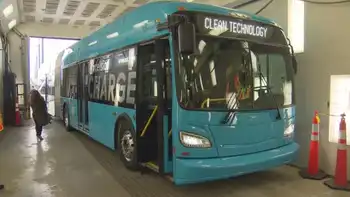Urbana-Champaign center planned to improve security of national power grid
ST. LOUIS, MISSOURI - Trees will continue to cause their fair share of outages on the nation's increasingly strained power grid, say researchers involved with the industry.
But bigger, more-costly blackouts might be caused by terrorists and hackers who exploit the system's old communication networks, they say.
"The security of this system is just not very high," said Lester Lave, an economist and co-director of the Electricity Industry Center at Carnegie Mellon University. "If you had a disgruntled ex-employee, he could do a lot to harm the system."
Two years after a major blackout in the Northeast, the National Science Foundation gave $7.5 million to the University of Illinois Urbana-Champaign for a national center that aims to improve the security of the networks that govern the national power grid.
The center - the Trustworthy Cyber Infrastructure for the Power Grid - will task 19 scientists with creating network protocols that quickly and securely would share the pulsing supply and demand information of many companies.
It could happen in much the same way that secure protocols were created for business transactions on the Internet, said U of I electrical and computer engineer Bill Sanders, who will head the center.
The deregulation of the power industry in 1998 created more choices for customers, but it also created more power suppliers that weren't used to talking with each other.
"Different operating companies have an incentive not to share information under normal situations," Sanders said. "Under emergency situations, it may be important that they can share that information in a controlled way, quickly."
Regional independent system operators, or ISOs, were established to gather information and manage power supplies across many providers.
But that system failed Aug. 14, 2003, when a snowballing blackout left 50 million people in the Northeast and Canada without power. The blackout started with downed trees in Ohio, but spread because of poor decision-making and communications by the Midwest ISO, according to a federal investigation.
The Midwest ISO, based in Carmel, Ind., manages power supplies for a region that includes St. Louis.
Mike Anderson, the security and systems administration director of the Midwest ISO, said sensors have been added that offer a better picture of the grid. He added that communications with energy providers now occur via secure, dedicated lines.
Lave said the number of major power outages affecting 500,000 or more people hasn't dropped from about four a year.
AmerenUE said trees, felled by storms Saturday in the St. Louis region, cut power for 250,000 customers.
Related News

Electric vehicle sales triple in Australia despite lack of government support
MELBOURNE - Sales of electric vehicles in Australia tripled in 2019 despite a lack of government support, according to the industry’s peak body.
The country’s network of electric vehicle charging stations was also growing, the Electric Vehicle Council’s annual report found, including a rise in the number of faster charging stations that let drivers recharge a car in about 15 minutes.
But the report, released on Wednesday, found the market share for electric vehicles was still only 0.6% of new vehicle sales – well behind the 2.5% to 5% in other developed countries.
The chief executive of the council, Behyad Jafari, said the…




